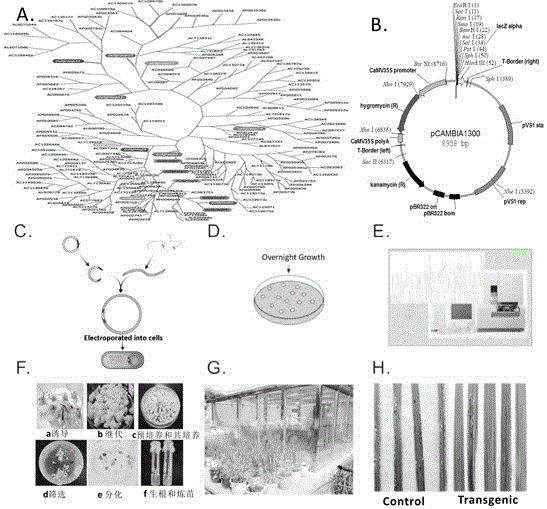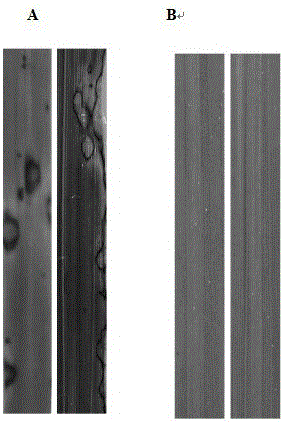A rice blast resistance gene rmg38 and its application
A rice blast resistance gene and rice technology, applied in the field of genetic engineering, can solve the problems of tedious and time-consuming breeding process, and achieve the effects of broadening the resistance spectrum, enhancing resistance and shortening the breeding cycle
- Summary
- Abstract
- Description
- Claims
- Application Information
AI Technical Summary
Problems solved by technology
Method used
Image
Examples
Embodiment 1
[0022] Example 1 Cloning, vector construction and identification of resistant plants of rice blast resistance gene RMg38
[0023] The test procedure of this embodiment is as figure 1 Shown.
[0024] 1. Determination of the candidate site RMg38 for resistance to rice blast: (1) Most of them exist in the form of gene families and gene clusters. There are 4 and 2 similar copies in each of Nipponbare and 93-11; (2) in their LRR Areas, especially LxxLxLxx areas, have a higher Ka / Ks value;
[0025] 2. Isolation and cloning of rice blast resistance gene RMg38 (12g36730-Q2436): Use public databases to sequence the varieties Nipponbare and 93-11 as reference sequences, and design primers (both ends of the primers have restriction sites AscI) . The primer sequence is shown in the sequence table, the forward primer sequence is shown in SEQ ID NO: 4; the reverse primer sequence is shown in SEQ ID NO: 5.
[0026] Using disease-resistant rice varieties Tetep, Gumei No. 2 and Q2436 as templates, ...
PUM
 Login to View More
Login to View More Abstract
Description
Claims
Application Information
 Login to View More
Login to View More - R&D
- Intellectual Property
- Life Sciences
- Materials
- Tech Scout
- Unparalleled Data Quality
- Higher Quality Content
- 60% Fewer Hallucinations
Browse by: Latest US Patents, China's latest patents, Technical Efficacy Thesaurus, Application Domain, Technology Topic, Popular Technical Reports.
© 2025 PatSnap. All rights reserved.Legal|Privacy policy|Modern Slavery Act Transparency Statement|Sitemap|About US| Contact US: help@patsnap.com



